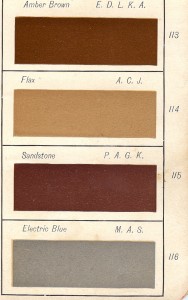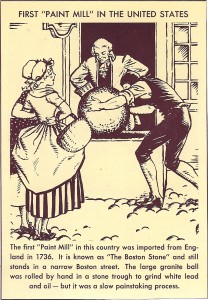This week, an important piece of American paint memorabilia made its way back to the U.S., thanks to two antique book dealers, one in England and one in the U.S., and Painting in Partnership, a house painting contractor from the Chicago area. In 1886, B.S. Mill wrote a book entitled The Painters’ Hand Book.
It was published in Cincinnati by the Eckstein White Lead Company in 1887. It was leather-bound and measured only 4 inches in width and less than 6 inches in height. It is now considered a very rare book. Why is this little book such a big deal?
First, Mr. Mills was an authority in his field. He was Secretary to The Master House Painters’ Association, which had been formed in 1884. Although I could not confirm it, Mr. Mills had likely been involved in the founding of the Association. That Association changed its name in 1937 to Painting and Decorating Contractors of America (PDCA), which to this day is the voice of the painting industry in the U.S.
Second, this book contains 116 lithographed reproductions of the master painter colors, along with their color pigment formula. Why is this important? Because, up to that point in time, and for quite a while after, master house painters mixed their own paints and colors. It was not until decades later that paint manufacturers succeeded in their attempts to directly supply the public with ready-mixed and colored paints. Consequently, these master painter colors give very valuable insight into “historic” paint colors as they really were.
Painting in Partnership is a national award-winning house painting contractor who specializes in historic paint restoration. Purchasing this old book is an illustration of our commitment to give our clients the best color consultation possible for their “period” homes.










 Follow
Follow

